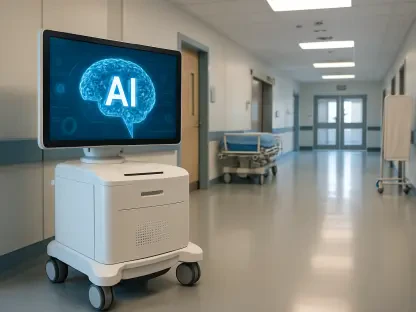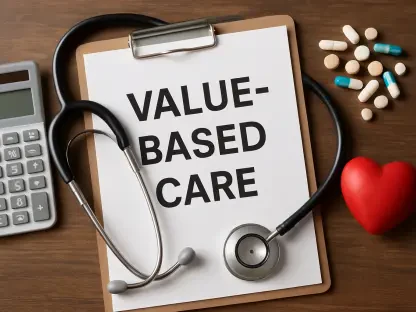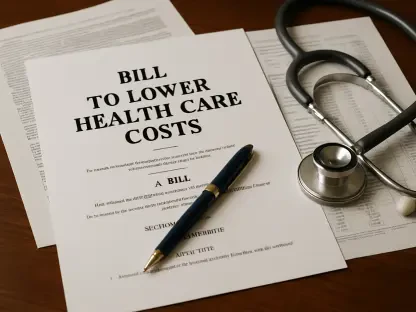The management of prescription renewals remains a crucial yet frequently underestimated responsibility within the healthcare industry. This task imposes significant administrative burdens on healthcare providers and directly influences patient care and medication adherence. Given the current challenges faced by healthcare systems worldwide, the need for innovative solutions to streamline prescription renewal management has become paramount. Improving this process is essential not only for the efficiency of healthcare services but also for the overall quality of patient outcomes.
The Current Challenges
Managing prescription renewals presents substantial challenges primarily due to the considerable time and effort required from physicians. On average, doctors dedicate up to two hours daily to the management of renewals, with large medical practices handling up to 100 requests each day. Such time commitments significantly detract from direct patient care and pose a major contributor to physician burnout. This strain on healthcare providers highlights the need for more efficient processes to alleviate this burden.
Furthermore, delays or disruptions in medication regimens adversely impact nearly 40% of patients. This is particularly problematic for those with chronic conditions who require consistent medication adherence to maintain their health. For example, diabetic patients experiencing interruptions in their medication regimen tend to encounter higher rates of adverse events, significantly affecting their overall well-being. Addressing these challenges is crucial for ensuring continuous and reliable patient care.
Existing Processes and Their Limitations
Currently, prescription renewal processes largely rely on simple delegation rules. Staff members are responsible for evaluating renewal requests against predetermined criteria, such as the type of medication, basic clinical parameters, and the presence of follow-up appointments. For instance, in the context of anti-diabetic medications, staff would assess a patient’s hemoglobin A1c levels and check for any upcoming appointments within six months. These rules, although straightforward, are often informally documented and limited by their reliance on easily accessible data.
Moreover, the simplicity of these criteria is essential to prevent misinterpretation. However, this also means that the processes do not accommodate patient-specific factors effectively. As a result, physicians often become involved unnecessarily, further contributing to their workload. The current system’s impersonal nature and lack of flexibility underscore the need for more advanced and adaptable solutions.
Advancements in Technology
Recent advancements in artificial intelligence (AI), Electronic Medical Records (EMR) interoperability, and Software-as-a-Service (SaaS) offer promising new directions for automating prescription renewals. These technologies hold the potential to bring about significant improvements by reducing staff time dedication by up to 80%, incorporating sophisticated logic for smarter decision-making, supporting a wider range of medications and patient types, and enhancing overall safety through comprehensive data usage.
Not only do these advancements streamline the renewal process, but they also enhance its role in broader pharmacovigilance programs. By making the renewal process more automated and efficient, these technologies allow healthcare providers to focus more on direct patient care, ultimately improving the healthcare delivery system’s efficiency.
Essential Capabilities for Automation
The future efficiency of prescription renewals will depend on a comprehensive automated system built around four key capabilities: data extraction from EMRs, health information exchanges, provider-specific business rules, and automated summaries and monitoring. Each of these capabilities plays a critical role in ensuring an effective and streamlined renewal process.
Data Extraction from EMRs
The process of automating prescription renewals begins with the ability to extract relevant data from Electronic Medical Records (EMRs) to establish a patient’s clinical baseline. This involves reviewing the patient’s medical history, current medications, and laboratory results. Since much relevant clinical data is captured as text within EMRs, the system must be adept at analyzing unstructured data. The effective extraction and analysis of this data are fundamental to creating accurate and patient-specific renewal recommendations.
Health Information Exchanges
The second capability necessary for automation involves gathering additional data from health information exchanges. Given the fragmented nature of US healthcare, a patient’s clinical data is often dispersed across multiple EMRs, including past pharmacy fill data and records from state prescription monitoring programs. It is essential to not only aggregate this data but also clean and standardize it for use in decision-making processes. Ensuring the completeness and accuracy of this data is critical for the effectiveness of the automated renewal system.
Provider-Specific Business Rules
Allowing clinicians to configure intervention levels based on their clinical criteria constitutes the third key capability for an automated system. This flexibility is vital in reducing friction typically encountered with automated clinical decision support systems. By ensuring that the renewal process incorporates provider-specific guidelines and preferences, the automation system can support decisions made under the doctor’s license. This approach ensures that automated renewals uphold the quality and personalization of care provided to patients.
Automated Summaries and Monitoring
The final capability involves automating summaries around the key aspects of “Appropriateness, Access, and Availability” (the “3As”). Appropriateness ensures that medications align with provider-specific guidelines, taking into account contraindications and drug interactions. Access involves addressing benefit design changes that may affect renewals, such as prior authorization requirements and formulary updates. Availability deals with supply constraints, providing proactive alerts and alternative recommendations. Addressing these areas transparently and efficiently helps ensure continuous medication access for patients.
Achievements and Future Potential
Managing prescription renewals is a critical but often overlooked responsibility in the healthcare sector. This task places a considerable administrative load on healthcare providers and has a direct impact on patient treatment and adherence to medications. With the current challenges that global healthcare systems are encountering, finding innovative ways to streamline the management of prescription renewals has become essential. Enhancing this process is vital not only for improving the efficiency of healthcare services but also for ensuring better patient outcomes. Efficient prescription renewal management can lead to fewer errors, reduced waiting times, and improved patient satisfaction. Therefore, investing in modern technologies and systems to simplify this process is necessary for the future of healthcare. Ultimately, by enhancing the management of prescription renewals, healthcare providers can offer more comprehensive and timely care, which is crucial for the well-being of patients.









